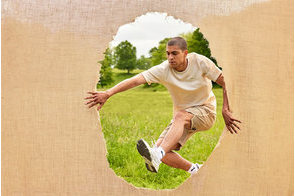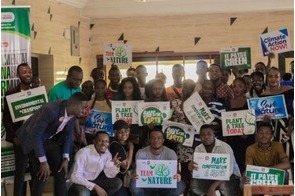Re-innovating for sustainability

Summary
At Bilaad Realty, our strategy is aligned with achieving the SDGs, which provide a comprehensive framework for targeting sustainable development.
In today’s fast-evolving and hyper-competitive world, innovators have to keep innovating or re-innovating. This is also true for innovators in real estate development. They have to keep anticipating and creating future demands. Countries, states, and urban districts worldwide will continue to undergo major structural changes (pun intended) as the economy, for instance, shifts from old-fashioned manufacturing towards the provision of precision products and services. To remain relevant in this fast-changing milieu, all the stakeholders – from policymakers, market operators to consumers – must innovate or adapt to new innovations.
Sustainable innovations deliver long-term economic and financial returns, social progress, and environmental protection. This requires new ideas and knowledge. But it also entails adapting existing ideas, concepts, practices, and products to positively contribute to the ecological environment, social cohesion, and economic viability. Either way, sustainable innovations foster a better world today and for tomorrow.
Innovations of the past have delivered mass production of goods, leading to stupendous, gross economic output growth. While they have also delivered financial value to shareholders, they have often ignored the broader stakeholders and harmed the environment. But sustainable innovations take the well-being of the entire ecosystem of people and planet into account. Thus, they emphasize inclusive and long-term benefits and environmental preservation.
The environmental hazard from carbon emissions from productive activities and wasteful consumption in the advanced and major emerging markets, has put the entire world at risk. Its harshest impacts are felt more in the developing world, where far less environmentally damaging activities occur. This is why sustainable innovation has to contribute to global environmental solutions. But where such contributions are local, they are nevertheless important in fostering environmental sustainability worldwide.
Without a doubt, sustainability imposes constraints, on the use of resources, how we produce, what we consume, and how we manage waste. In many cases, sustainability can be avant-garde. It entails new ways of doing things and new solutions. It also prescribes how key resources like energy, water and materials are to be produced, consumed, and recycled. While it prescribes a new way of making money, it does not negate profit. Instead, sustainability highlights how innovations can deliver comprehensive benefits in terms of well-being, systems, and inclusion.
Innovating for well-being
Sustainable innovations are validated by their positive impacts on individual, organisational, social, and environmental well-being. Such impacts should not be fleeting; they necessarily must be long-term. For organisations, innovations that accentuate the cycle of boom and bust do not qualify as sustainability compliant. For individuals and societies, innovation should also provide a sense of lasting benefits – either in terms of job creation or livable wages. Furthermore, for an innovation to be sustainable, it must not pose a threat to the environment. Countries, regions and cities that promote sustainable innovations have therefore become more competitive for investment and tourism.
The three inseparable elements of sustainable well-being are quality of life (including happiness), sustainable economy, and a balanced and protective relationship with nature. In practice, particularly in real estate, sustainable well-being can be actualized in varying degrees and different spheres. The design of physical living environments can encourage sociability, harness natural energy for lighting, use renewable energy as power source, and conservation of natural resources including water.
For a wider impact, such design concepts can be integrated, in planning an estate, a city, or region to provide green and well-connected transportation system that eases commute and promotes net-zero carbon emissions. Many cities are transitioning to this, by re-innovating on sustainable socio-economic models, including green housing and transportation solutions.
Systemic change
Many of the sustainability challenges are global, whether they relate to the environment or inequitable access to opportunities and wealth. Many of the challenges are systemic, within and across countries. This, therefore, makes it important that solutions must be structural and systemic. The sustainable innovations that can deliver systemic impact require collaboration between and among public and private sector leaders.
The areas where sustainable innovations with systemic impacts are needed include energy, logistics, healthcare, housing, finance, agriculture, retailing and waste management. Indeed, housing is at the centre of these needs.
Systemic innovations are related to changes in socio-technical systems. They entail not only technological change but also societal and cultural changes and are also driven by changes in user contexts and symbolic meanings. Systemic innovations now form the core of national and supra-national innovation strategies, like the European Green Deal. To be successful, the drive for systemic change should integrate changing societal values. For instance, environmental sustainability derives influence from the desire of people to live in an ecologically cleaner and safer environment.
Inclusion
In the first decade of the 21st century, innovation researchers emphasized networked, open, and diverse forms of innovation. Since the past few years, the World Bank, the Organization for Economic Co-operation and Development (OECD), and many other development agencies and national governments have been promoting inclusive innovation approaches and actions. Some of the initiatives include skill development, inclusive financial access, and social safety nets.
Inclusivity in the innovation process requires individuals to have the opportunity and the support they need to innovate and benefit from innovation. Inclusive innovation is summed up by the principle “innovation for all”, which advocates that not only should all people have some opportunities to innovate, but also that innovation must serve the society at large.
The need for innovation cannot be overemphasized. People need to be intuitive, creative, and skilled, both for performance in the workplace and in the larger society. Inclusive innovation supports collective wisdom and the crowdsourcing of solutions. In a deeper sense, sustainable and inclusive innovations promote a new form of ‘democracy’, whereby citizens have the right and the opportunity to be creative and to contribute to improvements in services, products, and the structure of public organizations such as municipalities, schools, and hospitals.
Bilaad and sustainability
Sustainable real estate development offers an organizing framework based on opportunity and respect for human values. To have healthy communities, a nontoxic physical and social environment is a prerequisite. As society is evolving, awareness of the importance of healthy living has been growing.
At Bilaad Realty, our strategy is aligned with achieving the United Nations Sustainable Development Goals, which provide a comprehensive framework for targeting sustainable development by 2030. This is helping us to grow our impact as a socially- and environmentally-responsible business. We are deeply invested in creating solutions that will benefit our business while serving the ever-evolving society.
Bilaad Realty Limited is an Abuja-based company focused on delivering sustainable real estate solutions.
Related
-
Innovating for a sustainable world
Businesses don’t have to choose either to be successful or sustainable. They should be both through innovation.
-
PUMA showcases products from recycled materials in push for 3Rs
Through its RE:COLLECTION range, PUMA is demonstrating its commitment to the 3Rs – Reduce, Reuse, and Regenerate ...
-
Access Bank supporting innovation and sustainable agriculture
Access Bank continues to show its commitment to innovation to help address social, environmental and economic challenges.










